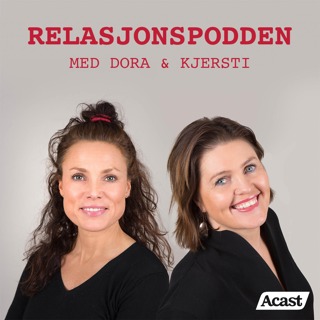
Episode 111 - Behavior Analytic Language
If you’ve listened to more than one of our episodes, you must enjoy listening to behavior analytic terminology. If so, that makes you unlike most of America who ::GASP:: really dislikes ABA jargon. Should we be offended? Drop our monocles in shock? Perhaps instead we should use research to figure out a better way to improve how we disseminate the science of behavior in plain English. Articles discussed this episode: Lindsley, O.R. (1991). From technical jargon to plain English for application. Journal of Applied Behavior Analysis, 24, 449-458. doi: 10.1901/jaba.1991.24-449 Becirevic, A., Critchfield, T.S., Reed, D.D. (2016). On the social acceptability of behavior-analytic terms: Crowdsourced comparisons of lay and technical language. The Behavior Analyst, 39, 305-317. doi: 10.1007/s40614-016-0067-4 Critchfield, T.S., Doepke, K.J., Epting, L.K., Becirevic, A., Reed, D.D., Fienup, D.M., Kremsreiter, J.L., & Ecott, C.L. (2017). Normative emotional responses to behavior analysis jargon or how not to use words to win friends and influence people. Behavior Analysis in Practice, 10, 97-106. doi: 10.1007/s40617-016-0161-9 If you're interested in ordering CEs for listening to this episode, click here to go to the store page. You'll need to enter your name, BCBA #, and the two episode secret code words to complete the purchase. Email us at abainsidetrack@gmail.com for further assistance.
22 Jan 20201h 25min

Episode 110 - IISCA w/ Dr. Adithyan Rajaraman
While we’ve certainly mentioned and even discussed the IISCA in previous episodes, for some reason we’ve yet to do a full-length episode on this relatively new tool in the behavior assessment arsenal. That all changes this week as we do a deep dive into the interview-informed synthesized contingency analysis with our special guest, Dr. Adithyan Rajaraman. What is the IISCA? Why use the IISCA? And when is the IISCA? We promise to answer at least two of those burning questions. Articles discussed this episode: Rajaraman A., Hanley G.P. (2018) Interview-Informed Synthesized Contingency Analysis (IISCA). In: Volkmar F. (eds) Encyclopedia of Autism Spectrum Disorders. Springer, New York, NY. doi: 10.1007/978-1-4614-6435-8 Hanley, G.P., Jin, C.S., Vanselow, N.R., & Hanratty, L.A. (2014). Produing meaningful improvements in problem behavior of children with autism via synthesized analyses and treatments. Journal of Applied Behavior Analysis, 47, 16-36. doi: 10.1002/jaba.106 Jessel, J., Ingvarsson, E.T., Metras, R., Kirk, H., & Whipple, R. (2018). Achieving socially significant reductions in problem behavior following the interview-informed synthesized contingency analysis: A summary of 25 outpatient applications. Journal of Applied Behavior Analysis, 51, 130-157. doi: 10.1002/jaba.436 Slaton, J.D. & Hanley, G.P. (2018). Nature and scope of synthesis in functional analysis and treatment of problem behavior. Journal of Applied Behavior Analysis, 51, 943-973. doi: 10.1002/jaba.498 If you're interested in ordering CEs for listening to this episode, click here to go to the store page. You'll need to enter your name, BCBA #, and the two episode secret code words to complete the purchase. Email us at abainsidetrack@gmail.com for further assistance.
15 Jan 20201h 33min

Episode 109 - Sensory Extinction
It may be a question you remember from graduate school: What’s the deal with sensory extinction? Is it a form of extinction? Of punishment? Or, is it something else? This week, we revisit that old chestnut by discussion four articles that hope to solve the mystery of sensory extinction. And we review one of the most complementary replication articles of all time! Articles discussed this episode: Iwata, B.A., Pace, G.M., Cowdery, G.E., & Miltenberger, R.G. (1994). What makes extinction work: An analysis of procedural form and function. Journal of Applied Behavior Analysis, 27, 131-144. doi: 10.1901/jaba.1994.27-131 Mazaleski, J.L., Iwata, B.A., Rodgers, T.A., Vollmer, T.R., & Zarcone, J.R. (1994). Protective equipment as treatment for stereotypic hand mouthing: Sensory extinction or punishment effects? Journal of Applied Behavior Analysis, 27, 345-355. doi: 10.1901/jaba.1994.27-345 Lerman, D.C. & Iwata, B.A. (1996). A methodology for distinguishing between extinction and punishment effects associated with response blocking. Journal of Applied Behavior Analysis, 29, 231-233. doi: 10.1901/jaba.1996.29-231 Smith, R.G., Russo, L., & Le, D.D. (1999). Distinguishing between extinction and punishment effects of response blocking: A replication. Journal of Applied Behavior Analysis, 32, 367-370. doi: 10.1901/jaba.1999.32-367 If you're interested in ordering CEs for listening to this episode, click here to go to the store page. You'll need to enter your name, BCBA #, and the two episode secret code words to complete the purchase. Email us at abainsidetrack@gmail.com for further assistance.
8 Jan 20201h 5min

January 2020 Preview
Happy New Year! We brush off our New Year’s Resolutions by promising even more fun and exciting topics. You can trust us: We’ve read all the research on lying! Plus, Jackie promises more fun by announcing our inaugural ABA Inside Track Trivia Night. And the proper unveiling of our updated theme song by a musician you’ll recognize. Welcome to 2020, BCBAs! Articles for January 2019 Sensory Extinction Iwata, B.A., Pace, G.M., Cowdery, G.E., & Miltenberger, R.G. (1994). What makes extinction work: An analysis of procedural form and function. Journal of Applied Behavior Analysis, 27, 131-144. doi: 10.1901/jaba.1994.27-131 Mazaleski, J.L., Iwata, B.A., Rodgers, T.A., Vollmer, T.R., & Zarcone, J.R. (1994). Protective equipment as treatment for stereotypic hand mouthing: Sensory extinction or punishment effects? Journal of Applied Behavior Analysis, 27, 345-355. doi: 10.1901/jaba.1994.27-345 Lerman, D.C. & Iwata, B.A. (1996). A methodology for distinguishing between extinction and punishment effects associated with response blocking. Journal of Applied Behavior Analysis, 29, 231-233. doi: 10.1901/jaba.1996.29-231 Smith, R.G., Russo, L., & Le, D.D. (1999). Distinguishing between extinction and punishment effects of response blocking: A replication. Journal of Applied Behavior Analysis, 32, 367-370. doi: 10.1901/jaba.1999.32-367 IISCA w/ Dr. Adithyan Rajaraman Rajaraman A., Hanley G.P. (2018) Interview-Informed Synthesized Contingency Analysis (IISCA). In: Volkmar F. (eds) Encyclopedia of Autism Spectrum Disorders. Springer, New York, NY. doi: 10.1007/978-1-4614-6435-8 Hanley, G.P., Jin, C.S., Vanselow, N.R., & Hanratty, L.A. (2014). Produing meaningful improvements in problem behavior of children with autism via synthesized analyses and treatments. Journal of Applied Behavior Analysis, 47, 16-36. doi: 10.1002/jaba.106 Jessel, J., Ingvarsson, E.T., Metras, R., Kirk, H., & Whipple, R. (2018). Achieving socially significant reductions in problem behavior following the interview-informed synthesized contingency analysis: A summary of 25 outpatient applications. Journal of Applied Behavior Analysis, 51, 130-157. doi: 10.1002/jaba.436 Slaton, J.D. & Hanley, G.P. (2018). Nature and scope of synthesis in functional analysis and treatment of problem behavior. Journal of Applied Behavior Analysis, 51, 943-973. doi: 10.1002/jaba.498 Behavior Analytic Language Lindsley, O.R. (1991). From technical jargon to plain English for application. Journal of Applied Behavior Analysis, 24, 449-458. doi: 10.1901/jaba.1991.24-449 Becirevic, A., Critchfield, T.S., Reed, D.D. (2016). On the social acceptability of behavior-analytic terms: Crowdsourced comparisons of lay and technical language. The Behavior Analyst, 39, 305-317. doi: 10.1007/s40614-016-0067-4 Critchfield, T.S., Doepke, K.J., Epting, L.K., Becirevic, A., Reed, D.D., Fienup, D.M., Kremsreiter, J.L., & Ecott, C.L. (2017). Normative emotional responses to behavior analysis jargon or how not to use words to win friends and influence people. Behavior Analysis in Practice, 10, 97-106. doi: 10.1007/s40617-016-0161-9 Lying Behavior Reinecke, D.R., Newman, B., Kurtz, A.L., Ryan, C.S., & Hemmes, N.S. (1997). Teaching deception skills in a game-play context to three adolescents with autism. Journal of Autism and Developmental Disorders, 27, 127-137. doi: 10.1023/a:1025835706522 Bergstrom, R., Najdowski, A.C., Alvarado, M., & Tarbox, J. (2016). Teaching children with autism to tell socially appropriate lies. Journal of Applied Behavior Analysis, 49, 1-6. doi: 10.1002/jaba.295 Sauter, J.A., Stocco, C.S., Luczynski, K.C., & Moline, A.D. (2019). Temporary, inconsistent, and null effects of a moral story and instruction on honesty. Journal of Applied Behavior Analysis. doi: 10.1002/jaba.552
1 Jan 202020min

Bonus Episode 20 - The Year in ABA (2019) w/ Matt Cicoria
As 2019 comes to a close, we’re joined by our podcasting buddy, Matt Cicoria, of the Behavioral Observations podcast to wax philosophical about all the going’s-on in behavior analysis in the past 12 months. From memorials to trends in research and practice we’d like to see continue to our hopes for the next year of our science. Wishing all of you Happy Holidays!
25 Des 20191h 17min

Episode 108 - Research Grab Bag IX: Research S'mores
Well, how nice of you to stop by the ol’ campfire. Pull up a log, why dontcha? We’re just swappin’ stories, stories about our favorite research topics. Care for a marshmallow with chocolate and graham crackers? You can make one of those, whaddya call ‘em. S’mores? Do you have a favorite research article to spin a yarn about? Something to keep the dark and cold away? Here, why don’t I start… Articles discussed this episode: Bowman, L.G., Hardesty, S.L., Sigurdsson, S.O., McIvor, M., Orchowitz, P.M., Wagner, L.L., & Hagopian, L.P. (2019). Utilizing group-based contingencies to increase hand washing in a large human service setting. Behavior Analysis in Practice, 12, 600-611. doi: 10.1007/s40617-018-00328-z Sheply, C. & Grisham-Brown, J. (2019). Applied behavior analysis in early childhood education: An overview of policies, research, blended practices, and the curriculum framework. Behavior Analysis in Practice, 12, 235-246. doi: 10.1007/s40617-018-0236-x Ingul, J.M., Havik, T., & Heyne, D. (2019). Emerging school refusal: A school-based framework for identifying early signs and risk factors. Cognitive and Behavioral Practice, 26, 46-62. doi: 10.1016/j.cbpra.2018.03.005 If you're interested in ordering CEs for listening to this episode, click here to go to the store page. You'll need to enter your name, BCBA #, and the two episode secret code words to complete the purchase. Email us at abainsidetrack@gmail.com for further assistance.
18 Des 20191h 14min

Episode 107 - Executive Functioning w/ Dr. Adel Najdowski
We got tired of executive functioning feeling like some ephemeral concept so we decided to reach out to someone who wrote a book on the subject, Dr. Adel Najdowski to demystify the term. Besides getting a great behavioral definition of executive functioning, we also get a whole boatload of tips on how to teach these very important skills. We’re pretty sure this episode is so fun, you won’t have to worry about maintaining focus! PRODUCTION NOTE: Due to some wonky technical problems, this episode has a few choppy bits in the audio. It doesn’t spoil any of the content, but we wanted to give you the heads-up so you were prepared. Articles discussed this episode: Najdowski, A.C. (2017). Flexible and focused. San Diego, CA: Academic Press. If you're interested in ordering CEs for listening to this episode, click here to go to the store page. You'll need to enter your name, BCBA #, and the two episode secret code words to complete the purchase. Email us at abainsidetrack@gmail.com for further assistance.
11 Des 20191h 5min

December 2019 Preview
With so much holiday shopping to do, we’re keeping our topics fun and light this month. First up we’ll be talking with Dr. Adel Najdowski all about executive functioning. Seriously, all about it. Then we’ll dive into the old grab bag for three topics totally unrelated to each other. And, on December 25th, everybody gets a special bonus episode Christmas present! Articles for December 2019 Executive Functioning w/ Dr. Adel Najdowski Najdowski, A.C. (2017). Flexible and focused. San Diego, CA: Academic Press. Grab Bag IX: Research S’Mores Bowman, L.G., Hardesty, S.L., Sigurdsson, S.O., McIvor, M., Orchowitz, P.M., Wagner, L.L., & Hagopian, L.P. (2019). Utilizing group-based contingencies to increase hand washing in a large human service setting. Behavior Analysis in Practice, 12, 600-611. doi: 10.1007/s40617-018-00328-z Sheply, C. & Grisham-Brown, J. (2019). Applied behavior analysis in early childhood education: An overview of policies, research, blended practices, and the curriculum framework. Behavior Analysis in Practice, 12, 235-246. doi: 10.1007/s40617-018-0236-x Ingul, J.M., Havik, T., & Heyne, D. (2019). Emerging school refusal: A school-based framework for identifying early signs and risk factors. Cognitive and Behavioral Practice, 26, 46-62. doi: 10.1016/j.cbpra.2018.03.005
4 Des 201914min






















